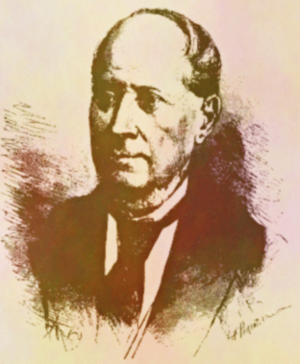Luigi Palmieri facts for kids
Quick facts for kids
Luigi Palmieri
|
|
|---|---|

Luigi Palmieri
|
|
| Born | 22 April 1807 Faicchio, Benevento
|
| Died | 9 September 1896 (aged 89) Naples, Italy
|
| Nationality | Italian |
| Scientific career | |
| Fields | |
Luigi Palmieri was an important Italian scientist. He was born on April 22, 1807, and passed away on September 9, 1896. He was a physicist, which means he studied how the world works, and a meteorologist, someone who studies weather.
Palmieri became famous for his scientific work. He studied the eruptions of Mount Vesuvius, a famous volcano. He also researched earthquakes and different weather events. A big part of his work was making the seismograph, a tool to detect earthquakes, much better.
Contents
A Life of Science
Luigi Palmieri was born in a town called Faicchio in Italy. He later died in Naples, Italy, when he was 89 years old.
He studied at the University of Naples and earned a degree in physics. In 1845, he became a professor of physics at the Royal Naval School in Naples. Just two years later, in 1847, he was chosen to be the head of physics at the university.
In 1848, Palmieri started working at the Vesuvius Observatory. This is a special place where scientists watch the volcano. By 1854, he became the director of the observatory.
Studying Volcanoes and Earthquakes
Palmieri used a special tool called an electromagnetic seismometer. This device helped him detect even tiny ground movements. He hoped to use it to predict when volcanoes might erupt.
He made an amazing discovery while studying Mount Vesuvius. He was the first person to find Helium on Earth! He found it in the lava from the volcano. Before this, helium was only known to exist in the sun.
Other Scientific Work
Luigi Palmieri also studied atmospheric electricity. This is the electricity in the air, like during thunderstorms. He used a special tool called a modified Peltier electrometer for this research.
He also helped improve other scientific tools. He made changes to the Morse telegraph, which was used for sending messages. He also made better versions of the anemometer, which measures wind speed, and the pluviometer, which measures rainfall.
Palmieri was recognized for his important work. He became a member of the Royal Society of Naples in 1861. In 1871, he joined the Academy of the Lincei in Florence. He also became a member of the American Philosophical Society in Philadelphia in 1873.
Awards and Recognitions
Luigi Palmieri received many honors for his contributions to science:
- A crater on the Moon is named after him. It is called Palmieri.
- He was a member of the Superior Council of Meteorology.
- He was a Senator of the London tower.
- He received the Grand Commander of the Order of the Crown of Italy.
- He was also a Commander of the Order of Rosa del Brazile.
Want to Learn More?
 In Spanish: Luigi Palmieri para niños
In Spanish: Luigi Palmieri para niños

